#fantômas against fantômas
Photo

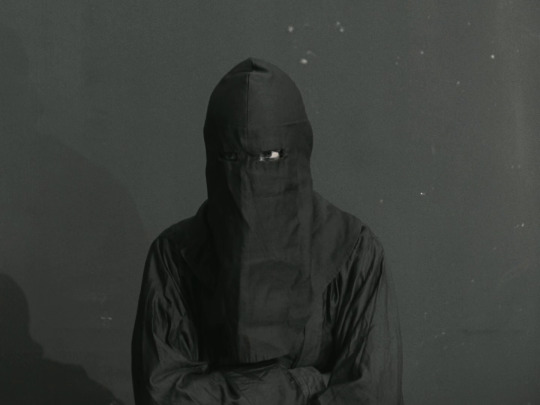
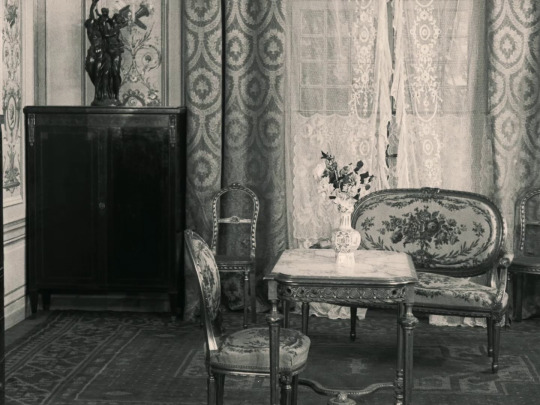

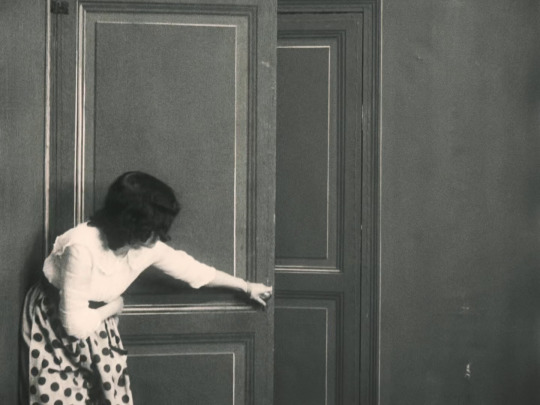
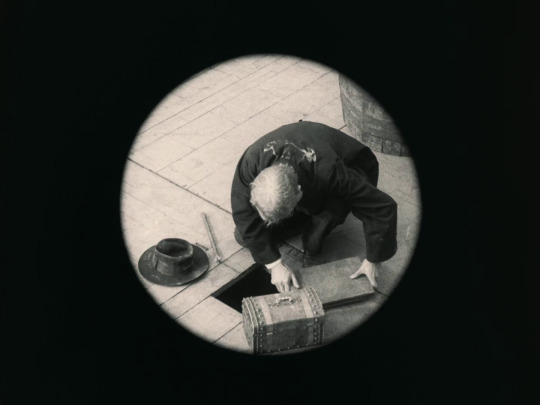
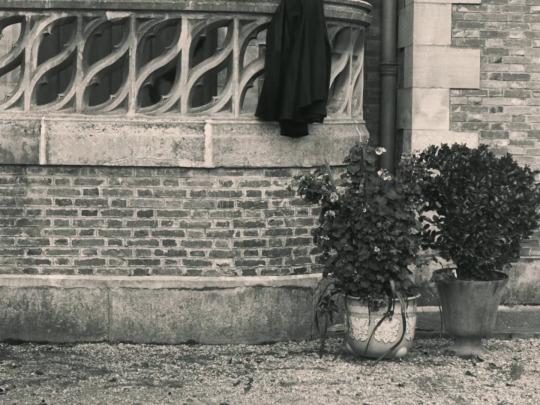
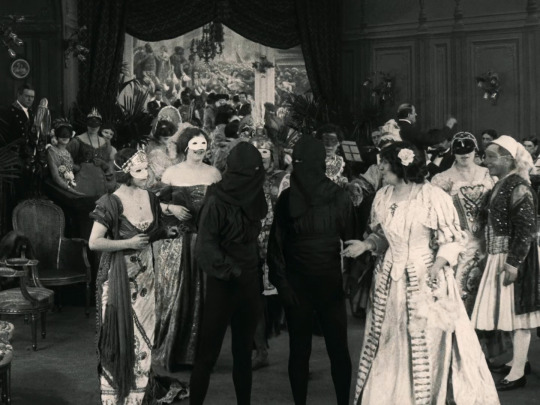
Fantômas IV: Fantômas contre Fantômas (Louis Feuillade, 1914)
#fantômas iv: fantômas contre fantômas#fantômas against fantômas#fantômas#louis feuillade#silent film#caps#the guitar when fantômas arrives at the ball#and tom bob is just too good
91 notes
·
View notes
Text


Fantômas vs. Dr. Mabuse
Who will triumph?
#rené navarre#rudolf klein-rogge#fantômas (1913)#dr. mabuse the gambler#dr. mabuse der spieler (1922)#fantômas#dr. mabuse#classic films#silent films#barbie meme poster#barbie 2023#supervillains#I want these bitches to match wits against each other#my post
1 note
·
View note
Text
THIS DAY IN GAY HISTORY
based on: The White Crane Institute's 'Gay Wisdom', Gay Birthdays, Gay For Today, Famous GLBT, glbt-Gay Encylopedia, Today in Gay History, Wikipedia, and more … December 11

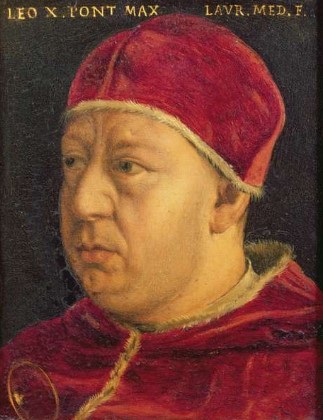
1475 – Pope Leo X (d.1521), born Giovanni di Lorenzo de' Medici, was the Pope from 1513 to his death in 1521. He was the last non-priest (only a deacon) to be elected Pope. He is known for granting indulgences for those who donated to reconstruct St. Peter's Basilica and his challenging of Martin Luther's 95 Theses. He was the second son of Lorenzo de' Medici, the most famous ruler of the Florentine Republic, and Clarice Orsini. His cousin, Giulio di Giuliano de' Medici, would later succeed him as Pope Clement VII (1523-34).
Several modern historians have concluded that Leo was homosexual. Contemporary tracts and accounts such as that of Francesco Guicciardini have been found to allude to active same-sex relations - alleging Count Ludovico Rangone and Galeotto Malatesta were among his lovers.
Cesare Falconi has examined in particular Leo's infatuation with the Venetian noble Marcantonio Flaminio, with Leo arranging the best education that could be offered for the time. Von Pastor has argued, however, against the credibility of these testimonies, and rejected accusations of immorality as anti-papal polemic. Gucciardini was not resident at the papal court during Leo's pontificate, while other contemporaries such as Matteo Herculano took pains to praise his chastity. Paul Strathern, a British writer and academic, argues that Leo, while homosexual, was not sexually active as pope, despite identifying notable members of that family as such.

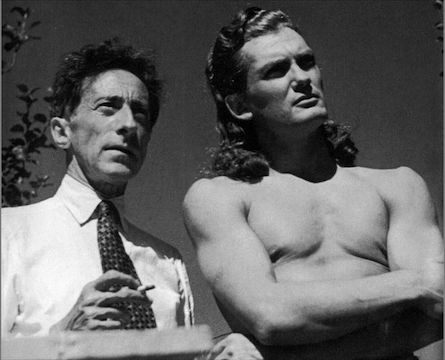
Jean Cocteau and Jean Marais
1913 – Jean Marais, French actor (d.1998); Marais was never much of an actor, and it is doubtful he would have achieved international fame had he not become Jean Cocteau's lover, but he was, by universal acclaim, one of the most handsome men ever to appear in films. In the 1940s when he made most of his movies for Cocteau, actors were still slicking down their hair with Kreml and Vitalis. But he changed all that. His cheveaux fous and athletic good looks created a new style of postwar leading man.

When in 1946 he spent his time in Cocteau's Beauty and the Beast, trapped within an ape-like constume, waiting for Beauty's kiss to turn him once again into Jean Marais, Gay moviegoers around the world secretly wished that they were Josette Day who actually got to kiss the handsome actor's furry face. What is perhaps most interesting about the friendship between Cocteau and Marais is that the actor's face in profile bore an astonishing resemblance to the boys Cocteau had been sketching for thirty years before meeting him.
In the 1960s, he played the famed villain of the Fantômas trilogy. After 1970, Marais's on-screen performances became few and far between, as he preferred concentrating on his stage work. He kept performing on stage until his eighties, also working as a sculptor. In 1985, he was the head of the jury at the 35th Berlin International Film Festival.


1948 – Alvin Baltrop (d.2004) was a gay African-American photographer who earned fame through his photographs of the Hudson River piers during the 1970s and 1980s.
Baltrop was born in 1948 in the Bronx. He discovered his love of photography in junior high school. Baltrop received no formal art education; older photographers from the neighborhood taught him different techniques and how to develop photos himself.
Baltrop enlisted in the Navy as a medic during the Vietnam War and continued taking photos, mainly of his friends in sexually provocative poses. He built his own developing lab in the sick bay, using medic trays for developing trays. After his time in the Navy, Baltrop worked odd jobs as a street vendor, a jewelry designer, a printer, and a cab driver. Because he wanted to spend more time taking photos at the Hudson River piers, he quit his job as a cab driver to become a self-employed mover. He would park his van at the piers for days at a time, living out of his van to take pictures.
From 1975 through 1986, Baltrop took photographs of the West Side piers, where he was a well-known member of the community. Baltrop knew every person he photographed, and people often volunteered to be photographed. Younger boys and men at the piers often confided in him about their sexual orientation, their relationships with their families, their housing status, and their work.
Baltrop captured the gay cruising spots and hookup culture that existed in New York City before the AIDS epidemic. Baltrop's photographs not only captured human personalities, but also the aesthetics of the dilapidated piers. His life work is a snapshot of gay, African-American, and New York City history.
Baltrop struggled to make his way in the art world, facing racism from the white gay art world. Gay curators often rejected his work, accused him of stealing it, or stole his work themselves.

"Three Sailors"
Late during the 1990s, NYC artist John Drury, who knew Alvin from their shared neighborhood - Drury living on Third Street, with his wife and Baltrop on Second Street, in lower Manhattan - befriended the artist and recognized the photographers unique abilities, nominating him for a Louis Comfort Tiffany Foundation Award for the Arts. Alvin Baltrop had few exhibits in his lifetime; his work gaining international fame only after his death.
According to one journalist, Baltrop came out as gay at fourteen years old. Baltrop had long term relationships with men and women, but preferred identifying as gay.
Baltrop was diagnosed with cancer in the 1990s. Impoverished and without health insurance, curators and filmmakers attempted to exploit him for their own financial gain. He died on February 1, 2004


1990 – Nakshatra Bagwe, born in Mumbai, India, is an Indian actor and award winning film maker. Nakshatra will be making his Indian feature film debut in My Son is Gay and is due for his international film debut as the lead actor of Hearts. His films Logging Out, Book of Love, Curtains and PR (Public Relations) represent the current LGBT scenario of India.
He is a LGBT rights activist and also an organiser of Gujarat's first ever pride march. Nakshatra has participated in several Pride Parades in India. He won KASHISH – Mumbai International Queer Film Festival in 2012 for his debut film Logging Out. It was screened at prestigious venues like Queens Museum of Arts (New York), The Old Cinema (London) and it was also a part of Queer India European tour 2012 to raise awareness about LGBT issues in the Indian context.
Nakshatra hails from Konkan coastal region. Masure, Malvan is his native village. He takes part in homosexuality awareness projects. Nakshatra and his mother were featured in a promo of popular Indian television show Satyamev Jayte. He came out to society when he participated in Asia’s first LGBT flashmob. He also participated in second queer flashmob which happened at Dadar station, Mumbai. Nakshatra posed nude for a campaign named 'Breaking Closets'.
In July 2014, He became the brand ambassador of Moovz, a global social network for gay men. Nakshatra is first and only openly Indian LGBT person to be signed up as the brand ambassador by any brand till now.

1998 – The mother of Tyra Hunter (1970 – 1995) is awarded $2.9 million in a wrongful death lawsuit against the city of Washington DC. Hunter, a pre-operative transsexual, died of injuries sustained in a car accident in 1995. Emergency medical technicians at the scene were abusive and withheld treatment, and a doctor at DC General Hospital failed to follow nationally accepted standards of care.


18 notes
·
View notes
Note
What do you think could have been the relationship between Lupin and Fantômas, if they shared the same universe ? I think they couldn't have been friends but beside that. Rivals ? Mortal foes ? Occasional partner in crime ? Maybe something similar to Lavender Jack and the Black Note.
Oh, definitely mortal foes. "Rivals" usually implies some kind of sportsmanship about it, which is definitely not on the table for anyone who deals with Fantomas. With Jack and the Note, there's at least an understanding on Jack's part that the Note is shaped by similar circumstances to his own and that he raises relevant criticisms against the institutions he's attacking, it's just that he's fighting them by terrorizing and murdering innocents by the dozens and nothing justifies that. There's an ideological conflict there that really isn't the case with Lupin and Fantomas, because neither of them are really ideologically motivated.
The two commit crimes for the thrill of getting away with it, but Lupin finds thrill in art, daring theatrics, in bringing justice to those who deserve it, and sticking up to police and high society. Fantomas finds thrill in gruesome murder and conquest, in the panic and paranoia he causes, in the terror he creates and the horrendous acts of evil he orchestrates. They are perfect opposites and, much like with Fantomas and the Mexican Fantomas, their existences are incompatible with each other, two characters in such extreme opposite sides of morality.
I know Alan Moore's LOEG put the two together under a French League and, frankly I could see Lupin in the 1910s working alongside characters like the Nyctalope and Mors and even Zenith. Robur is a bit of a stretch but still workable. But Fantomas? It's a miracle that any of them would tolerate working with him, or that he would not try to kill them all quickly to dispatch potential threats, and it's completely impossible that Lupin and Fantomas would ever work together.
In the great master thiefs of pulp fiction, despite them looking so alike, you'd be hard pressed to find two more archetypical characters so directly opposite to each other. Fantomas is quite literally the evil opposite of Lupin, the character that drapes himself in gentleman thief garb to commit horrible atrocities that the real Lupin would never even consider. There's some real mileage you can get out of them even from just a character dynamic standpoint.

27 notes
·
View notes
Text



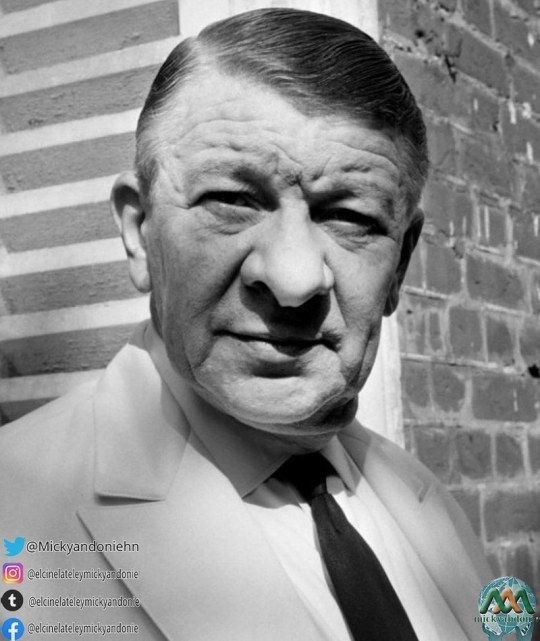
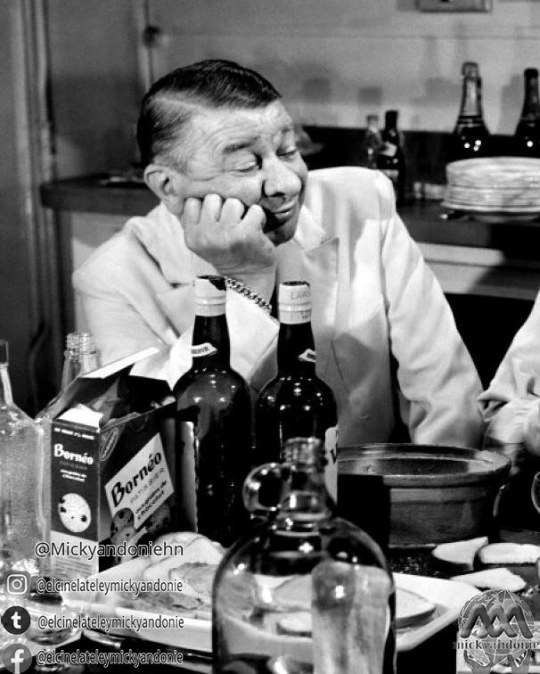

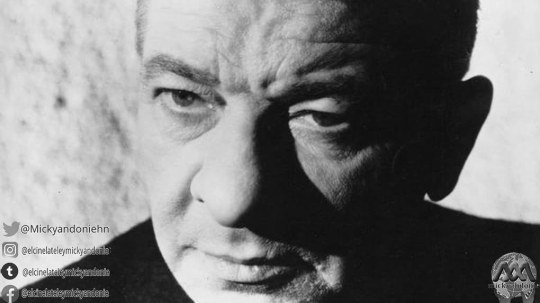



ROBERT DALBAN.
Filmography
1934: Gold in the street
1937: Passeurs d'hommes
1939: Deuxième bureau contre Kommandantur
1945: Boule de Suif
1945: the final judgment
1947: Quai des Orfèvres
1947: Les jeux sont faits
1949: Berlin Express
1949: Manon
1949: The walls of Malapaga
1950: A man walks in the city
1951: The Passerby
1952: Ils étaient cinq
1952: The Seven Deadly Sins
1952: La Minute de vérité
1954: Service ladder
1954: Obsession
1954: Destinées
1955: Les Diaboliques
1956: Les Truands
1956: La Loi des rues
1956: The Lebanese mission
1956: Le Chanteur de Mexico
1956: Maid in Paris
1956: I will return to Kandara '
1957: The river of the three reeds
1957: La Tour, prends garde!
1957: Les Espions
1958: Marie-Octobre
1959: ¿Pourquoi viens-tu si tard?
1960: Boulevard
1961: Please, not now!
1961: Le Miracle des loups
1962: Madame Sans-Gêne
1962: The Mysteries
1963: Vice and virtue
1963: Les Tontons flingueurs
1963: Hardi Pardaillan!
1964: Fantômas
1965: Man
1965: Trap for Cinderella
1965: Fantômas is left
1966: Fantômas against Scotland Yard
1966: The great restaurant
1969: Mon oncle Benjamin
1969: The Brain
1970: Le Distrait
1971: Les Malheurs d'Alfred
1972: The tall blond man with a black shoe
1973: Commentary réussir quand on est con et pleurnichard
1973: Hail the Artist
1973: Now, where did the seventh company get?
1974: Eat a pot of fraises
1975: Philippe's incorrigible
1975: only the wind knows the answer
1976: Dracula and son
1978: Coup de tête
1980: The coup
1980: La Boum
1981: La Chèvre
1982: Les Miserables
1982: La Boum 2
1983: Les Compères
1984: P'tit Con.
Créditos: Tomado de Wikipedia
https://es.wikipedia.org/wiki/Robert_Dalban
5 notes
·
View notes
Text
Fantômas 10/19 Portland 1998

https://archive.org/details/19981019Fantmas-ZootSuitePortlandWAUSA
‘‘Fantômas is anyone and no one, everywhere and nowhere, waging an implacable war against the bourgeois society in which he moves’‘.
8 notes
·
View notes
Text
Happy 101st Anniversary to Fritz Lang's silent epic crime thriller masterpiece, Dr. Mabuse, the Gambler!

Dr. Mabuse, the Gambler was released on April 27, 1922 in two parts, The Great Gambler: A Picture of the Time and Inferno: A Game of People of Our Time. In its entirety, the film clocks in at four-and-a half hours. Based on the novel written by Norbert Jacques, it tells the story of the exploits of the criminal mastermind set against the tumultuous backdrop of Weimar-era Germany - in a zeitgeist of high-crime, decadence, and degeneracy.
Of the German title, Dr. Mabuse, der Spieler - "spieler" carries several meanings for the character of Mabuse - a gambler...actor...player. He's a man who gambles with money and people, effortlessly maneuvering between the classes while in disguise and embodies whatever role he's in, and plays with the lives and fates of others.
Mabuse shares attributes with his forebearers Professor Moriarty, Svengali, Fantômas, and Dr. Caligari and he epitomizes the aspects of a Nietzchean Übermensch.
Rudolf Klein-Rogge (Rotwang of Metropolis & King Etzel of Die Nibelungen) stars as the titular villain - a diabolical crime lord who is a master of disguise, nefarious gambler, reputed psychoanalyst, and a ruthless manipulator of people. He also has the powers of mind control and hypnosis at his disposal. Dr. Mabuse commits a myriad of crimes ranging from theft, counterfeiting, predatory gambling, extortion, blackmail, kidnapping, murder, and others. Mabuse runs his criminal empire like a well-oiled machine. He is abetted by a network of underlings, agents, and accomplices. Anyone could be in league with Mabuse to undermine law enforcement. Mabuse is a harsh boss to work for - punctuality is paramount and expects his orders to be carried out with no room for error. When one works for Mabuse, it's for life - any betrayal and/or desertion carries a death sentence.
He is also quite charismatic, and his seductive prowess affects anyone who comes in contact with him.
Dr. Mabuse's arch-nemesis is State Prosecutor Norbert von Wenk, a dedicated public servant of the state determined to bring him to justice and doggedly pursues the man whom he has labeled, "the Great Unknown". Wenk is brought in to investigate the numerous cases of predatory gambling on the rise. He makes contact with one of Mabuse's victims - millionaire playboy Edgar Hull and to put him under police protection. His investigation takes him from one gambling den to another. As Wenk becomes more of a threat, Mabuse gets even more relentless in his quest to eliminate his most hated enemy.
The gorgeous and alluring women connected to Mabuse are popular nightclub dancer, Cara Carozza and the jaded and mysterious Countess Dusy Told. Carozza is also a intensely dedicated agent of his and deeply loves him. She was his mistress and had lived in a private room in his house. Once she developed actual feelings for him, Mabuse started acting callous towards her, and is treated as nothing more than a tool to him. He even has her honeypot Hull. When Mabuse meets Countess Told at a séance, he is immediately captivated by her beauty. In their first interaction, he feels a kinship between them. Wanting further contact, Mabuse hypnotizes the countess into inviting him to a soirée that she and her husband will be hosting. His desires for the countess quickly escalate into lust and obsession. He plots to take her for himself and to ruin her husband, Count Told.
Another man also carries a torch for Countess Told and it is Wenk.
The film also stars Aud Egede-Nissen as Cara Carozza, Gertrude Welcker as Countess Dusy Told, Alfred Abel as Count Told, Bernhard Goetzke as State Prosecutor Norbert von Wenk, and Paul Richter as Edgar Hull.
Those portraying Mabuse's underlings are: Robert Forster-Larrinaga as Spoerri, Hans Adalbert Schlettow as Georg, Georg John as Pesch, Charles Puffy as Hawasch, and Grete Berger as Fine
Dr. Mabuse, the Gambler is highly recommended for any silent film fan to watch, it's truly engaging from start to finish.
#rudolf klein-rogge#dr. mabuse the gambler#dr. mabuse der spieler#dr. mabuse der spieler (1922)#dr. mabuse#fritz lang#1920's#classic film#silent film#german cinema#weimar cinema#happy anniversary!#I love this magnificent film greatly#it is a film I'll always recommend to fans of silent cinema#long post#my post
2 notes
·
View notes
Photo
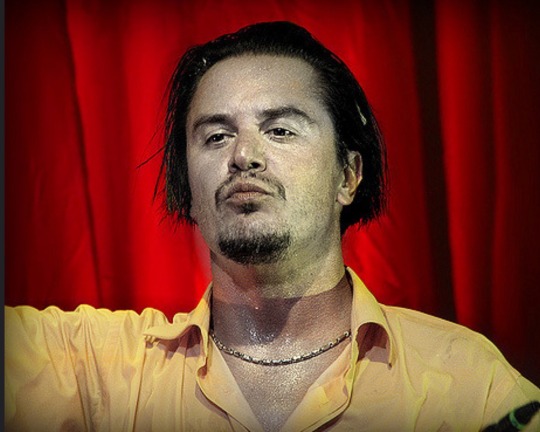
“Talking to Patton was a real pleasure—he seemed to open up in ways he hadn’t done in other interviews I’d read, mostly because the interviewers had asked him too many questions about Faith No More, or treated his music as “wacky.” By the time our conversation wound down, he was complaining that his ear hurt from pressing against the phone for over 90 minutes. I still think Fantômas is a terrific band (I saw them live about a month after the interview), and I have tremendous respect for Patton’s business model.” -(One lucky journalists description of interviewing Mike Patton.)
12 notes
·
View notes
Text
Fantômas: Juve Against Fantômas
Fantômas: Juve Against Fantômas
View On WordPress
0 notes
Text
Crime and Gangster Films
Film title in essay
C RIME & G ANGSTER
F ILMS
Part 1
Crime and Gangster Films are developed around the sinister actions of criminals or gangsters, particularly bankrobbers, underworld figures, or ruthless hoodlums who operate outside the law, stealing and violently murdering their way through life. In the 1940s, a new type of crime thriller emerged, more dark and cynical - see the section on film-noir for further examples of crime films. Criminal and gangster films are often categorized as post-war film noir or detective-mystery films - because of underlying similarities between these cinematic forms. Crime films encompass or cross over many levels, and may include at least these different types of films: the gangster film, the detective (or who-dun-it) film, the crime comedy, the suspense-thriller, and the police (procedural) film.
Crime stories in this genre often highlight the life of a crime figure or a crime's victim(s). Or they glorify the rise and fall of a particular criminal(s), gang, bank robber, murderer or lawbreakers in personal power struggles or conflict with law and order figures, an underling or competitive colleague, or a rival gang. Headline-grabbing situations, real-life gangsters, or crime reports have often been used in crime films. Gangster/crime films are usually set in large, crowded cities, to provide a view of the secret world of the criminal: dark nightclubs or streets with lurid neon signs, fast cars, piles of cash, sleazy bars, contraband, seedy living quarters or rooming houses. Exotic locales for crimes often add an element of adventure and wealth. Writers dreamed up appropriate gangland jargon for the tales, such as "tommy guns" or "molls."
Film gangsters are usually materialistic, street-smart, immoral, meglo-maniacal, and self-destructive. Rivalry with other criminals in gangster warfare is often a significant plot characteristic. Crime plots also include questions such as how the criminal will be apprehended by police, private eyes, special agents or lawful authorities, or mysteries such as who stole the valued object. They rise to power with a tough cruel facade while showing an ambitious desire for success and recognition, but underneath they can express sensitivity and gentleness.
Gangster films are often morality tales: Horatio Alger or 'pursuit of the American Dream' success stories turned upside down in which criminals live in an inverted dream world of success and wealth. Often from poor immigrant families, gangster characters often fall prey to crime in the pursuit of wealth, status, and material possessions (clothes and cars), because all other "normal" avenues to the top are unavailable to them. Although they are doomed to failure and inevitable death (usually violent), criminals are sometimes portrayed as the victims of circumstance, because the stories are told from their point of view.
Early Crime-Gangster Films Until the Dawn of the Talkies:
Criminal/gangster films are one of the most enduring and popular film genres. They date back to the early days of film during the silent era. In fact, even Edwin S. Porter's silent short western The Great Train Robbery (1903) has often considered a classic hold-up story and chase film - a movie about crime.
Perhaps the earliest 'crime' film was Sherlock Holmes Baffled (1900), a 45 seconds long short (released in 1903) that was shown one-person at a time in hand-cranked Mutoscope machines or nickelodeons in amusement arcades. It was also the earliest known film featuring Sherlock Holmes. The plot was about how the famed Arthur Conan Doyle detective, a cigar-smoking gentleman, was 'baffled' when a black-clothed thief magically disappeared (through trick-photography) with a sack of stolen goods. Also, The Adventures of Sherlock Holmes (1905), released by Vitagraph (although now a lost film) has been considered the first Sherlock Holmes film since it was created for a theatrical audience rather than as a one-person Mutoscope production.
One of the first films to officially mark the start of the gangster/crime genre was D. W. Griffith's The Musketeers of Pig Alley (1912) about organized crime. It wasn't the first gangster movie ever made, but it was the first significant gangster film that has survived. Outdoor scenes were shot in the gangland territory of NYC's Lower East Side with its slum tenements, and cast members included possible gang members. The story was about a poor, virtuous, and vulnerable Little Lady (Lillian Gish) who was threatened, victimized and terrorized by Snapper Kid (Elmer Booth) - the gangster leader of a gang known as the Musketeers.
[Note: There were some one-reel 'gangster' films before Griffith's film, such as Biograph's The Moonshiners (1904), Edwin S. Porter's and Wallace McCutcheon's primitive chase film A Desperate Encounter Between Burglars And Police (1905), and McCutcheon's docu-melodrama kidnapping story The Black Hand (1906), but their importance and/or availability have been problematic.]
French director Louis Feuillade's Fantomas series from the Gaumont film studio popularized the crime serial - Fantomas (1913-1914, Fr.) featured the character of supercriminal Fantomas (René Navarre). Based on the novels of Marcel Allain and Pierre Souvestre, Fantomas was released as five separate films, running roughly an hour each. Other characters included police inspector Juve (Edmund Breon) and newspaper journalist Fandor (Georges Melchior), who worked to bring down the arch-villain-thief (a master of disguises), who also committed identity theft and murder. The five episodes were:
Fantômas - À L'Ombre de la Guillotine (1913, Fr.) (aka In the Shadow of the Guillotine)
Juve Against Fantomas (1913, Fr.) (aka Juve versus Fantomas)
The Dead Man Who Killed (1913, Fr.) (aka The Murderous Corpse)
Fantomas Against Fantomas (1914, Fr.) (aka Fantomas versus Fantomas)
Le Faux Magistrat (1914, Fr.) (aka The False Magistrate)
Feuillade's later Judex (1916, Fr.), another popular film serial, featured a female criminal.
Traffic in Souls (1913) (aka While New York Sleeps), a six-reel melodrama, was a "photo-drama" expose of white slavery (entrapment of young women into prostitution) at the turn of the century in NYC, although the film exploitatively promised steamy sex in its advertisements. Mutual released The Gangsters and the Girl (1914), a short starring Charles Ray as undercover Detective John Stone investigating neighborhood urban gangs and a wrongly-condemned slum girl.
Raoul Walsh's first feature film, the silent crime drama The Regeneration (1915) has been regarded as the first feature-length gangster film, with presumably the first complex characterization of a criminal anti-hero. It showcased violent lawlessness on the streets of New York (it was shot on location in NYC's Bowery District on the Lower East Side), and the rise of an orphaned Irish-American slum boy named Owen Conway (Rockliffe Fellowes as a 25 year-old adult). He grew up to become a drunken gangster (prone to gambling) due to repressive social conditions in his environment. However, he was 'regenerated' (saved from a life of crime) after falling in love with do-gooder social worker Marie Deering (Anna Q. Nilsson).
The upcoming 1920s decade was a perfect era for the blossoming of the crime genre. It was the period of Prohibition, grimy and overpopulated cities with the lawless spread of speakeasies, corruption, and moonshiners, and the flourishing rise of organized gangster crime.
Josef von Sternberg's gangland melodrama Underworld (1927) with George Bancroft and Clive Brook, reflected the 1920s. It has often been considered the first modern gangster film, with many standard conventions of the crime film - and it was shot from the gangster's point of view. It won the Best Original Story Award for Ben Hecht - the first Oscar ever awarded for an original screenplay, and the first of Hecht's two Oscar wins (among six writing nominations during his career). [The first 'gangster' pulp had the same title, Underworld, a breeding ground for many crime thriller plots.] And Lewis Milestone's The Racket (1928), a Howard Hughes-produced film, concentrated on big-city corruption and a municipality controlled by the mob, and was banned in Chicago because of its negative depiction of the police.
Expressionistic German Crime Films:
Three German directors contributed a number of expressionistic black and white crime films, noted for chiaroscoro lighting, sharp-angled shots, and monstrous characters (i.e., insane scientists or doctors, or crazed individuals):
Robert Wiene's The Cabinet of Dr. Caligari (1919/1920, Germ.) (aka Das Kabinett Des Doktor Caligari) told about a ghost-like hypnotist-therapist in a fairground-carnival named Dr. Caligari (Werner Kraus). He used his power of hypnotism to commit crimes, through his performing somnambulist Cesare (Conrad Veidt). The influential film featured the shadowy, disturbing, distorted, and dream-nightmarish quality of the macabre and stylistic 'Caligari,' with twisted alleyways, lopsided doors, cramped rooms, crooked and overhanging buildings, and skewed cityscapes.
F.W. Murnau's silent classic Sunrise (1927), was about a country village farmer (George O'Brien) who fell for the allure of a sophisticated, vampish seductress/temptress (Margaret Livingston) from the City. She tempted him under the moonlight in a swamp, persuading him to devise a murderous plan to kill his pure, innocent wife (Janet Gaynor) - by drowning her during a trip to the City.
https://custom-researchpaper.com released several important silent crime films - influential post-war films that helped to launch the entire genre in the 1930s, including a series of Dr. Mabuse films about a mastermind character:
Dr. Mabuse, The Gambler (Parts I and II) (1922-1923) - a two-part silent crime melodrama about an evil, criminal boss capable of disguise, conspiracy, and tremendous hypnotic powers.
The Testament of Dr. Mabuse (1933) (aka Das Testament das Dr. Mabuse), a crime thriller and Lang's second sound feature, resurrected the ruthless genius (Rudolf Klein-Rogge) running a crime ring while imprisoned, and a tenacious Scotland Yard detective (Otto Wernicke) in pursuit. The film was noted for a spectacular car chase scene, explosions, and murders. The government interpreted the film as subversive and having anti-Nazi sentiments - causing Lang to hurriedly leave Germany (he soon relocated in the US and ended up directing in Hollywood by 1936). [Note: Ironically, the legendary director's swan-song film (his first film made in Germany since 1933), The 1000 Eyes of Dr. Mabuse (1960), spotlighted the same arch-criminal character.]
Lang's most seminal film was M (1931, Germ.) - his first sound feature (bridging the gap between silents and talkies). It was an expressionistic psychological thriller about a child molester serial killer. The pedophile-psychopath was identified as Hans Beckert (Peter Lorre) - his coat back was marked in chalk with the letter "M." He was caught hiding in an attic, and taken to a large abandoned brewery building to stand trial, where he was questioned by a panel of underworld boss-leaders.
The Gangster Film in the Era of the "Talking Picture":
It wasn't until the sound era and the 1930s that gangster films truly became an entertaining, popular way to attract viewers to the theatres, who were interested in the lawlessness and violence on-screen. The events of the Prohibition Era (until 1933) such as bootlegging and the St. Valentine's Day Massacre of 1929, the existence of real-life gangsters (e.g., Al Capone, John Dillinger, "Pretty Boy" Floyd, "Baby Face" Nelson) and the rise of contemporary organized crime and escalation of urban violence helped to encourage this genre. On the other side were law-enforcing "G-Men" (or "government men") led by the FBI's J. Edgar Hoover.
Many of the sensationalist plots of the early gangster films were taken from the day's newspaper headlines, encouraging the public appetite for crime films. The allied rackets of bootlegging, gambling and prostitution brought these mobsters to folk hero status, and audiences during that time vicariously participated in the gangster's rise to power and wealth - on the big screen. They vicariously experienced the gangster's satisfaction with flaunting the system and feeling the thrill of violence. Movies flaunted the archetypal exploits of swaggering, cruel, wily, tough, and law-defying bootleggers and urban gangsters.
The talkies era accounted for the rise of crime films, because these films couldn't come to life without sound (machine gun fire, screeching brakes, screams, chases through city streets and squealing car tires). The perfection of sound technology and mobile cameras also aided their spread. The first "100% all-talking" picture and, of course, the first sound gangster film was The Lights of New York (1928) - it enhanced the urban crime dramas of the time with crackling dialogue and exciting sound effects of squealing getaway car tires and gunshots. Rouben Mamoulian's City Streets (1931) from a story penned by Dashiell Hammett was reportedly Al Capone's favorite film, starring Gary Cooper and Sylvia Sydney as two lovers trapped by gangland connections. And Tay Garnett's violent Bad Company (1931) was the first picture to feature the gangland massacre on St. Valentine's Day.
Three Classic Early Gangster Films from Warner Bros:
Warner Bros. was considered the gangster studio par excellence, and the star- triumvirate of Warners' gangster cycle, all actors who established and defined their careers as tough-guys in this genre, included Edward G. Robinson, James Cagney, and Humphrey Bogart. Others who were early gangster stars included Paul Muni and George Raft.
Three great classic gangster films (among the first of the talkies) marked the genre's popular acceptance and started the wave of gangster films in the 1930s in the sound era. The lead role in each film (a gangster/criminal or bootleg racketeer of the Prohibition Era) was glorified as he rose to the top with infamy and power, but each one ultimately met his doom in the final violent scenes of these films, due to censors' demands that they receive moral retribution for their crimes.
The first two films in the cycle were released almost simultaneously by Warner Bros, setting the pattern for numerous imitators (with tommy guns, fedoras, double-breasted suits, etc.):
(1) Little Caesar (1930), directed by Mervyn LeRoy, starred Edward G. Robinson as a gritty, coarse and ruthless, petty Chicago killer named Caesar Enrico (or "Rico") Bandello (a flimsy disguise for a characterization of Al Capone), who experienced a rise to prominence and then a rapid downfall. Robinson was the first great gangster star.
(2) The Public Enemy (1931), directed by William Wellman, starred James Cagney (in his first film and breakout role) as a cocky, fast-talking, nasty, and brutal criminal/bootlegger named Tom Powers - most memorable in a vicious scene at the breakfast table where the snarling gangster assaulted his floozy moll girlfriend (Mae Clarke) by pressing a half grapefruit into her face. [Both were still in their pajamas, indicating that they spent the night together.] The startling finale included the door-to-door delivery of Cagney's mummy-wrapped corpse to his mother's house - the bandaged body fell through the front door. The main story was about two brothers, Tom (Cagney) and his straight, uptight brother Mike (Donald Cook) who grew up and pursued very different lifestyles. The pre-Code film emphasized how the early developmental environment clearly contributed to an evolving life of adult crime - and his inevitable gruesome death.
[Note: The same stars were reunited in another Pre-Code quasi-gangster/comedy film, Lady Killer (1933) with Mae Clarke as Cagney's moll, and Cagney as the head of a New York crime ring who must relocate and hide out in Hollywood.]
(3) Scarface: The Shame of the Nation (1932), directed by Howard Hawks, a Howard Hughes' produced film from UA, starred Paul Muni as a power-mad, vicious, immature and beastly hood in Prohibition-Era Chicago (the characterization of Tony Camonte was loosely based on the brutal, murderous racketeer Al Capone). Other stars were George Raft (as his coin-flipping emotion-less, right-hand killer) and Ann Dvorak (as Tony's incestuous sister Cesca).
The ultra-violent, raw landmark film in the depiction of Italian-American immigrant gangsters included twenty-eight deaths, and the first use of a machine gun by a gangster. It was brought to the attention of the Hays Code for its unsympathetic portrayal of criminals, and there was an ensuing struggle over its release and content. The disturbing portrayal of irresponsible behavior by the gangsters almost encouraged its attractiveness. [Note: In tribute over fifty years later, Brian de Palma remade the film with Al Pacino in the title role of Scarface (1983). Ironically, this film was also criticized as being too brutal.]
Both The Public Enemy (1931) and Scarface (1932) tried to deflect criticisms that they were sensationalizing the lifestyle of the hoodlums, with unconvincing prefaces or disclaimers. In particular, Scarface (1932) began with a critical, written statement to indict gangster hoodlumism and the public's and government's indifference. The audience was then blamed for promoting the role of the gangster with its perverse fascination in the phenomenon of mob activity - and then challenged:
"It is the ambition of the authors of 'The Public Enemy' to honestly depict an environment that exists today in a certain strata of American life, rather than glorify the hoodlum or the criminal."
"This picture is an indictment of gang rule in America and of the callous indifference of the government to this constantly increasing menace to our safety and our liberty. Every incident in this picture is the reproduction of an actual occurrence, and the purpose of this picture is to demand of the government: 'What are you going to do about it?' The government is your government. What are YOU going to do about it?"
The Influence of the Hays Production Code on Gangster Films:
The coming of the Hays Production Code in the early 1930s spelled the end to glorifying the criminal, and approval of the ruthless methods and accompanying violence of the gangster lifestyle. The censorship codes of the day in the 1930s, notably the Hays Office, forced studios (particularly after 1934) to make moral pronouncements, present criminals as psychopaths, end the depiction of the gangster as a folk or 'tragic hero,' de-glorify crime, and emphasize that crime didn't pay. It also demanded minimal details shown during brutal crimes.
One way the studios quieted some of the protest and uproar over "America's shame" was to shift the emphasis from the criminal to the racket-busting federal agents, private detectives, or "good guys" on the other side of the law. In William Keighley's G-Men (1935), the best example of this new 'gangster-as-cop' sub-genre, screen tough guy James Cagney starred as a ruthless, revenge-seeking, impulsive, violent FBI agent to infiltrate criminal gangs on a crime spree in the Midwest. Although he was on the side of the law working undercover, he was just as cynical, brutal, and arrogant as he had been in his earliest gangster films.
A police detective (Edward G. Robinson in an against-type role) went undercover and joined a NYC racket in Bullets or Ballots (1936), and in Anatole Litvak's The Amazing Dr. Clitterhouse (1938), Robinson portrayed a brainy crime specialist who joined Rocks Valentine's gang (led by Humphrey Bogart) and soon was masterminding heists. Robinson also starred as a college law professor - and special prosecutor who pursued justice in I Am the Law (1938). Anthony Mann's T-Men (1947) explored the similarities between Treasury Department agents and the counterfeiting criminals they pursued, and emphasized how villains were caught by semi-documentary style crime detection procedures (lineups, fingerprinting analysis, lab work, etc.).
Another developing 'Cain-and-Abel' sub-genre emphasized that crime didn't pay, in films such as Manhattan Melodrama (1934) with childhood friends William Powell and Clark Gable choosing two diametrically opposed lifestyles - prosecuting attorney and gambler/racketeer, and Angels With Dirty Faces (1938) with two young slum kids, James Cagney and Pat O'Brien, following two different paths - a criminal lifestyle (that was idolized by the Dead End Kids on New York's lower East Side) and the priesthood. In the electrifying finale, Cagney was taken on a long walk to his execution.
William Wyler's gangster melodrama Dead End (1937) portrayed the efforts of New York slum dweller (Sylvia Sidney) to keep her gang member brother Tommy (Billy Halop, one of the Dead End Kids) from emulating gangster Humphrey Bogart. The adolescent gang actors (veterans of the Broadway version of Dead End) were introduced in this film and later evolved into the East Side Kids and The Bowery Boys.
0 notes
Note
How do you think French Fantômas and Mexican Fantômas would react if they discovered the existence of each other ?

It's a very amusing coincidence that the timelines for these two actually align almost exactly in where one ends and the other begins. Fantomas's original canon takes place around 1909-1913, but Allain wrote Fantomas stories all the way to 1963, and while I can't get my hands on those or even find them for purchase, he's presumably never bothered to explain the time that's passed. Then, circa 1964, we have the Jean Marais blue faced Fantomas from the parody film. And then, circa 1966, Novaro Editorial starts publishing Fantomas, adapting the original stories and sort of mixing the two Fantomas together. And interestingly, the stories actually do demonstrate this shift happening.
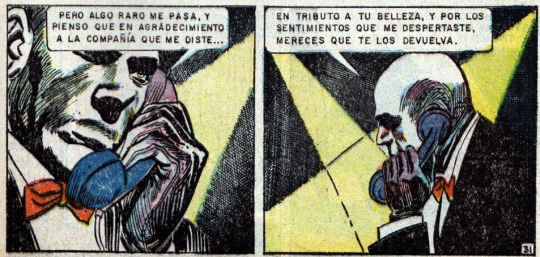
When Novaro started publishing Fantomas, they ran with the original version for about 9 stories. You can look at the image above and see that Fantomas was very much still intended to be the sinister villain, even if he started off much less horrible than in the novels since, by this point, the parody Fantomas from the film was still the main influence. And then we hit issue 10 in a story called Fantomas contra Fantomas, presumably based on the 1949 serial, and the story for the most part is like all the others. Lots of people talking, policemen fumbling around, Fantomas on a screen/phone talking to henchmen, and so forth. But there's something very different about this story, and it's Fantomas himself. You'd think that the transformation from novel/movie Fantomas to comic book would be some kind of gradual process, and that's what I assumed it was, until I read the comic.

And it's literally just two pages. In one page he's a sinister blue-faced being commanding orders to his henchmen, and the other, literally from one panel to the other, he goes from the blue-faced Bond villain from the film, to a quiet and contemplative man resting in an armchair playing around with his cat waiting for pieces to fall in place for his new game. And indeed, the whole story ends with Fantomas handing the fake Fantomas behind the current crimes to the police, with a final letter that is pretty out of character for the original Fantomas, but much more in line with the characterization he would take going forward. This story draws a very clear line in the sand: Out with the old and busted, in with the new hotness.
You wouldn't be that far off in assuming that Fantomas's redemption arc started simply because he got a cat.
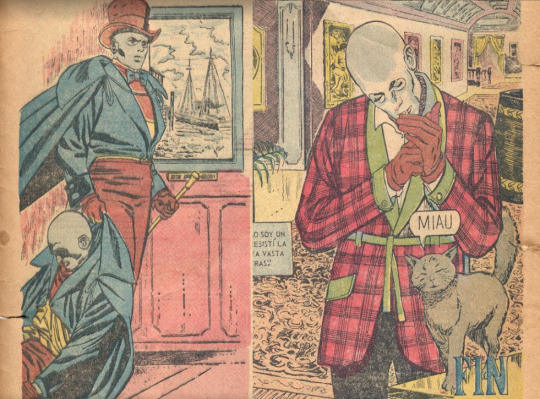
Dear journalists and Inspector Gerard: In front of you is the real thief of famous paintings. I was fine with him using my name, until he mistook a bad copy for an original.
I am a cultured man and a connoisseur of art: whoever cannot distinguish a true Cezanne is an idiot. He also did not commit the robberies because he was an art lover, but for money, and because he did not care that the paintings left France.
On the other hand, I make it known to you that the stolen Courbet has been returned into the hands of it's owner. I dislike making moves against poor people.
As for the other paintings that were stolen by the wretch that I left tied up, I must confess that, as I am in love with them, I could not resist the temptation to enrich my already vast collection of masterpieces.
The very next story, Fantomas steals a time machine to try and steal a ruby that once belonged to Genghis Khan, and after a bunch of adventures through time, he ends up failing. Two stories afterwards, Fantomas takes a look at the world, it's nukes and weapons race and the elites and politicians furthering it along, and states he's never had a bigger challenge than solving that, and decides to fight for world peace. So he assembles a league of the world's greatest scientists and fakes a message from aliens to all the world leaders telling them to dissassemble the arms race and instead divert all their resources to fight for the preservation and progress of the human race, and it actually works.
He tells the scientists that, although he is not considered a noble man, the magnitude of importance in this mission inspired him, later privately confiding to his cat that, actually, the real reason he sought to bring world peace was so war couldn't interfere with his plans. Fantomas pulled off Ozymandias's goal literal decades before Watchmen, and he did so without spilling a drop of blood. I mean, not that it lasted, obviously, but it was very clearly a different direction than what had been done with the character before, and this was going to be the direction going forward.

These stories are set in France, by the way, actually a lot of the Fantomas comics allude to the stories taking place in France. Sometimes they take place in France and sometimes they take place in some fake city and sometimes it's just Mexico, the latest stories seem to be pretty firmly set in Mexico, and the character's a globetrotter so he goes everywhere.
So really the question isn't how they react if they'd discovered each other, because you'd be hard pressed to find two characters less compatible and less willing to tolerate the other's existence. If these two exist in the same world, there is no way they don't know of each other at the very least.
How can French Fantomas possibly maintain a career and legacy as a mastermind of terror when this globally famous do-gooder keeps going around fighting crime and opression and acting as an ambassador for peace and goodwill and progress? How can the Mexican Fantomas possibly do good in the scale he must, or even get away with the odd mischief, if he bears the name and legacy of a globally infamous horror who drowned France in the blood of men, women, children and animals for years? What will the legacy of the name Fantomas be to the world?
It's a very clear Ultimate Evil vs Ultimate Good, past vs future conflict here, the old gothic serial killer vs the new sexy superhero, the two having very clearly defined worlds that are wholly incompatible, that you'd have to drag them outside of in order for this conflict to play out and risk undermining both characters.
The two things they have in common besides a name are the very clear storytelling precedents they share. One is, momentary disguises and diversions aside, there is only one Fantomas. And the other is the hardline rule of their universes: Fantomas Always Wins.

But how can Fantomas always be the sole victor, if he's not even the sole Fantomas?
Clearly one of them's gotta go.
Actually, I just discovered there WAS a Mexican Fantomas story detailing the two meeting. It was called “Uncle Fanto”, and it’s about an elderly Fantomas coming to visit his nephew, until he falls and busts a leg, and everyone laughs at him when he claims to be Fantomas, and Fantomas explains that his uncle misused his virtues for the sake of evil, and was incarcerated 20 years ago, and since then he’s been cleaning the name. Uncle Fanto’s looking for him because Allain has died and he has nothing left.


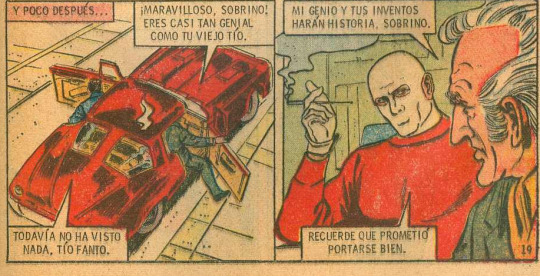
My genius and your inventions will make history, nephew
You recall that you promised to be on good behavior
And the story ends with Uncle Fanto getting stopped from an attempt to do one last crime, and promising that he won’t go back to the way he used to be, so Fantomas takes him to Professor Semo, who applies a memory-wiping treatment, fixes his knee and renews his agility (Semo is definitely my least favorite part of these stories because goddamn the guy is sketchy). The story ends with Uncle Fanto racing a robot.
Obviously this is a very “tame” take on this story and the original Fantomas, who’s presented here as mostly a robber and criminal mastermind (and he’s said to be sixty years old in 1971, which means he would have been born in 1911, so he definitely could not be the original Fantomas), and not the one I’d go with if I put these two together, but it’s the official one. It’s perfectly in line with the reocurring trend of the Mexican Fantomas finding ways to redeem villains and give them second chances.
Maybe he himself was a second chance for the original Fantomas.
29 notes
·
View notes